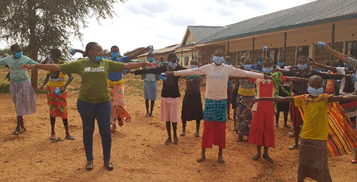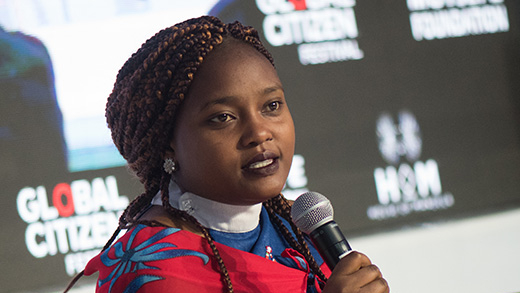BY JANE NAPAIS (YOUTH ADVOCATE FOR NUTRITION IN KENYA)
It’s unfortunate how situations can change in a blink of an eye. Covid-19 has significantly affected service delivery globally, especially in the field of nutrition. Based on the Global Report on Food Crises 2020, it is projected that the pandemic may add as many as 132 million people to the total number of hungry people in 2020.
The Kenyan economy is driven by agriculture, and any negative change in climate will affect the total annual yields. The onset of heavy rains from late 2019 into early 2020 resulted in floods around the country, severely affecting agriculture and food security in Kenya. The arrival of desert locusts into the country and other East African countries has caused a drop in the harvests made. With Covid-19, this has added salt to the already existing wound.
Effects of Covid-19 on nutrition
In Kenya, all learning institutions have been closed as a way of combating the spread of Covid-19. School meal programs no longer exist due to this closure. Most school-going kids that depended on these meal programs come from households that are critically food insecure. Due to the unavailability and inadequacy of food, these children face food rationing and most of them are only able to eat one to two meals a day. In some cases, parents and other primary caregivers go through fasting as a way to spare food for their little ones. The staple food items in these households contain a maximum of two food groups, leaving out vital nutrients. Malnutrition also increases susceptibility to other illnesses due to compromised immunity.
Even though lockdown has been lifted in most parts of the country, most food distributors in the supply chain are reluctant to move from one place to another due to fear of contracting Covid-19. Areas that relied on these distributions face acute food insecurity because either the commodities arrive in small quantities or they do not arrive at all. Due to these supply chain issues, farmers in rural areas are running losses because they are forced to dispose of their products or sell at cheaper prices, while those in urban areas are facing inadequacy and rise in prices of basic food items.
With the already overwhelmed health care facilities across the nation, the arrival of Covid-19 has seen a shift in focus towards managing this menace. This has left other sections of healthcare like nutrition departments, child welfare clinics, and antenatal clinics under-resourced. Children under 5 years old are now advised to stay at home with no growth monitoring, meaning early detection of malnutrition is hindered. Pregnant mothers do not attend antenatal clinics due to a fear of contracting the virus in health facilities that have been marked as red zones.
Ways to curb malnutrition during Covid-19
No country was expecting this pandemic. Even though most governments have emergency budgetary allocation, these funds have been used up at the early stages of Covid-19 in an urgent attempt to save lives. Now actions need to be adjusted from emergency to recovery. Below are some suggestions for how governments and stakeholders can address malnutrition in their Covid-19 response:
- Governments and stakeholders should develop specific mapping strategies and food security monitoring systems to identify the most vulnerable individuals at the household levels.
- The health sector should strengthen nutritional care to ensure continuity in nutrition services, both at the facility and community levels to allow early detection and community-based management of malnutrition.
- Resources should be mobilized from all sectors of every stable economy to save lives, particularly to areas where the impact of the pandemic is severe.
- Nutrition-sensitive social protection systems should be established and strengthened.
The importance of adolescent nutrition interventions
As a youth advocate in Kenya, my adolescent nutrition campaign has shifted its focus to reaching these adolescents at household level while schools remain closed. At household levels, not only do we raise awareness of the importance of prioritizing nutrition, but we also mobilize resources from willing donors and partners to provide food, livelihoods and other essentials to save lives and improve sanitation.
We believe that when proper care is given to adolescents, we are securing the future. Even though much focus is on saving the vulnerable, such as children, pregnant and lactating mothers, and the elderly, leaving out adolescents risks worsening the intergenerational cycle of malnutrition, and threatens the economic and social prosperity of my country.



